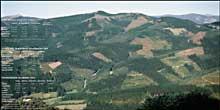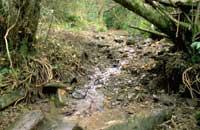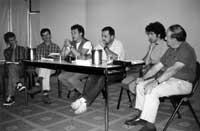Wood in the ACBC; 2001
2002/09/24 Imaz Amiano, Eneko - Elhuyar Zientziaren Komunikazioa
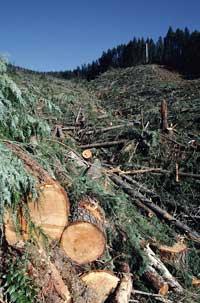
On the other hand, the presentation revealed the data and status of the ACBC's forest holdings. Last year, 54% of the area of the ACBC was forest (one of the highest percentages in Europe with Finland and Sweden), the wood sector billed 387.39 million € (55 million more than in 2000) and 3,713 people worked in this sector.
More data were given in the presentation. For example, it has been known that last year, in the CAPV, 205.509 Ha were conifers ( Pinus radiata: 150.019 Ha) and 155.038 Ha were the widest leaves. In addition, the percentage of pine trees has been slightly reduced and the percentage of broad leaves has increased. However, it should be borne in mind that, as noted in the report, the proliferation of extensive fronds (especially the Atlantic forest) is a consequence, mainly, of the abandonment of other agricultural activities, so it would not be an impulse of the wood sector.
And we have also known that 1.3 million trees were cut and 8 million were planted, that is, 61 trees cut. However, it should be noted that if the growth of the trees is correct, more plants must be planted than they will be cut into a pine forest. Before reaching the pine forest there are three clefts. Therefore, they are not planted to compensate for the loss of cut trees, but because production itself requires it.
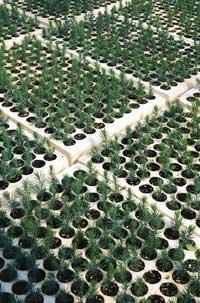
In addition to similar data, the advantages of wood versus other materials stand out: physical-mechanical and ecological. Among the latter it has been mentioned that it is recyclable, biodegradable and ecological and that it is managed in a sustainable way. However, it must be taken into account that most of the forests that are exploited in the CAPV are treated industrially: cleaning the forest, pruning, launching insecticides through planes... and when cutting the forest, almost always pour the whole forest (sometimes there is a tree that is not coniferous) to take the roots out of the soil, when it is possible to plough and revegetate. That is, old trees are not occasionally abandoned or plants are left around the streams... etc., as a suitable ecological exploitation would require.
Well, the forestry, especially the CAPV's Atlantic water forestry, and the use of wood instead of other materials, has had positive and beneficial things, but we must not forget that the exploitation is purely industrial, it is a huge field that plays with large plants and longer term, and that does not have much of the ecological.

Gai honi buruzko eduki gehiago
Elhuyarrek garatutako teknologia




